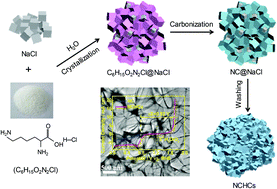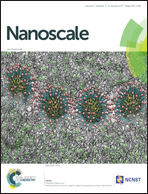Biomass lysine-derived nitrogen-doped carbon hollow cubes via a NaCl crystal template: an efficient bifunctional electrocatalyst for oxygen reduction and evolution reactions†
Abstract
Nitrogen-doped carbon hollow cubes (NCHCs) are fabricated from biomass L-lysine monohydrochloride via a facile and low-cost NaCl template process, showing efficient bifunctional electrocatalytic activities towards the oxygen reduction reaction (ORR) and oxygen evolution reaction (OER). The resultant lysine-derived carbon hollow cubes with hierarchical pores on the wall are conducive to mass transport and high utilization of nitrogen dopant-induced active sites during the electrocatalytic process. When used as electrocatalysts for the ORR, an onset potential of 0.92 V vs. RHE has been achieved for NCHCs. A negative shift of only 61 mV exists in the half-wave potential of NCHCs compared to that of the commercial Pt/C (20 wt%). Moreover, the NCHCs show high activity for the OER comparable to that of commercial RuO2/C (20 wt%). The sustainable conversion of biomass lysine to heteroatom-doped carbon hollow cubes and the recyclability of the NaCl template allow a scalable production and practical application of carbon materials for energy storage and conversion.



 Please wait while we load your content...
Please wait while we load your content...